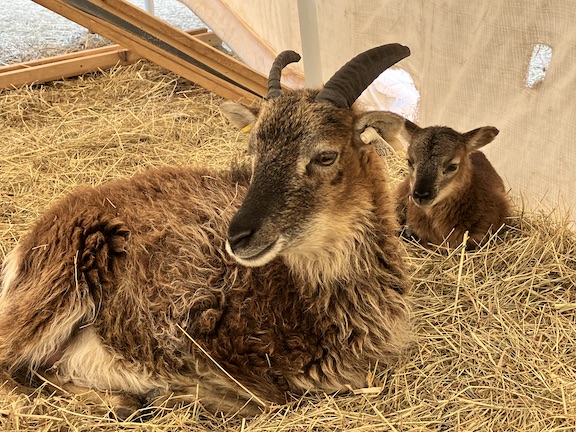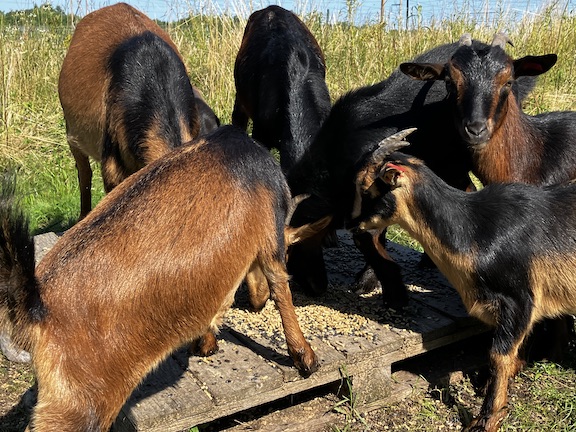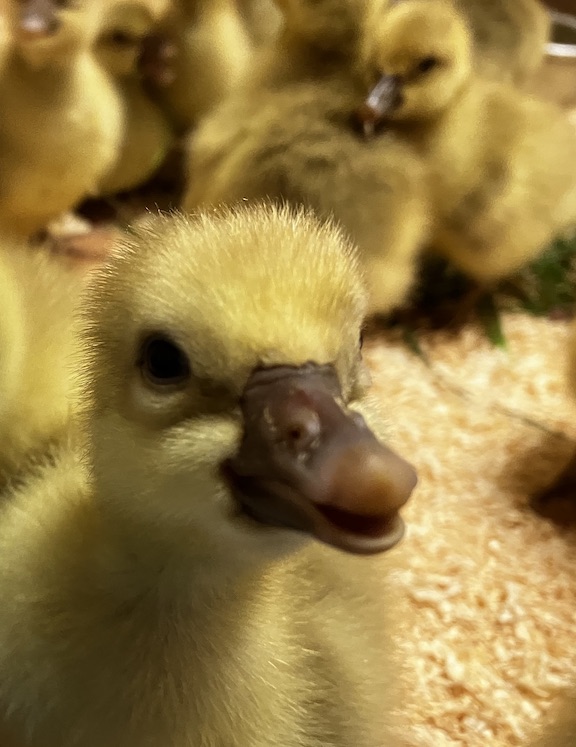By Sherri Talbot
In February of 2023, I had my first bout with COVID-19. I tested positive for weeks, and developed long COVID with neurological symptoms. I became sluggish, had difficulty focusing, and my short-term memory became unreliable. Even several months later there are gaps from that period. In addition, I had surgery, my husband underwent cardiac testing, and our bills were mounting. We found ourselves with few supports to fall back on.

While this series of events was unique to our homestead, illnesses or injuries are by no means unusual in farming. Farming is one of the most dangerous occupations in the United States. In 2020 there were over 18,000 injuries reported that required time away from work, according to the Bureau of Labor Statistics. This doesn’t even consider unreported injuries. The Rural Health Information Hub estimated that there may be about a hundred time-lost injuries a day in the agricultural field.
Incidents can also be deadly. In 2021, the Centers for Disease Control and Prevention (CDC) reported farming, fishing and forestry occupations had one of the highest rates of occupational fatalities. Falls, vehicle accidents and injuries from animals can all be fatal to agricultural workers. Working conditions can also result in long-term issues such as cancer, side effects from pesticide exposure and inhalation of dangerous substances like mold and bacteria.
With older farmers, the risk of illnesses and injuries becomes more likely. In 2021, the National Institute for Occupational Safety and Health reported that over two-thirds of agricultural fatalities were in workers over 55. As of 2023, the U.S. Senate Report on Aging reported the median age for farmers as 58 years old. The 2017 Census of Agriculture reported that only 8% of agricultural workers are under 35, meaning older farmers have little access to younger help.
In fact, finding help to get through an injury or illness can be a challenge in general. While larger organizations may have the coverage to maintain production, the Census of Agriculture in 2017 showed that almost 90% of farms in the United States are small and low-grossing, where there are often no extra hands available. There was a time when families and communities would have been close enough to help a farmer who was struggling. However, as families have fewer children and those children are less likely to remain on the farm, it becomes harder for older generations to depend on them as a support.
Injuries and illness are also listed among the reasons that farming is considered one of the most stressful occupations. Studies on stress in the general population have shown a correlation with poor outcomes in both physical and mental health, and farming is no exception. Men in agriculture have the fourth-highest suicide rates in the country, according to a 2023 study by Mary Nelson Robertson, Devon Mills, Heather Sedges and David Buys. Younger farmers may be at higher risk for mental health issues, with one 2020 study by Josie Rudolphi, Richard Berg and Ajay Parsaik showing that over 70% of young farmers from the Midwest suffered from an anxiety disorder. In the same study, over 50% suffered from major depressive disorder. Social isolation, substance use, co-occurring mental health disorders and financial concerns are believed to increase this risk.

Some types of assistance are available through government, nonprofit or private organizations, but rarely do these options cover illnesses or injuries. The U.S. Department of Agriculture (USDA) Coronavirus Food Assistance Program provided financial assistance for those who lost income due to the pandemic, but not for crops or animals lost due to labor shortages. In fact, the complex regulations limited payments if farm owners were too sick to work at least 400 hours annually. In addition, despite COVID-19 still being a concern for many, the program was closed in 2021.
Grant programs and loans through the USDA are, likewise, primarily aimed at supporting direct production. Payments allow the purchase of land or supplies, development of specialty crops or marketing programs, and organic certification. The Livestock Conservancy provides emergency grants for farmers raising the heritage breeds they monitor, but these funds are available for “purchase of animals, transportation, short term housing, and in some cases short term feed, veterinary care, and infrastructure.”
An email to Jennifer Fahy, communications director of Farm Aid, turned up little more in the way of resources. After coordinating with Farm Aid’s hotline team, their only suggestion was an organization called Farm Rescue, which covers only eight states in the northern and central Midwest. While Farm Aid has access to resources that assist farmers suffering from natural disasters, crop loss or disabilities, they acknowledge there is a serious shortage for farmers suffering illness, injury or having to care for a family member.

One team member, Ashley Garfias, stated, “I’ve found there seems to be a lack of resources for farmers who are caring for an aging/ill family member. It has come up a number of times for me in recent months’ cases.”
Another hotline operator, Rachel Van Boven, agreed. “There are some orgs that help out on farms that are impacted by natural disaster, but Farm Rescue is the only one I know of that also helps if there’s illness or injury. It’s definitely a missing piece in the farmer support puzzle!”
With this shortage of outside assistance, farmers should work within their communities to arrange resources before an emergency happens. Building relationships with other farmers or neighbors willing to swap help is invaluable. If available, family nearby can be an additional resource. Neighborhood teens may be interested in working with animals in return for referrals and work experience. Students in related fields, such as veterinary technicians, may need to fulfill internships, so developing relationships with local schools and colleges in advance may be beneficial.
Since, with all of these options, people are likely to have limited time available, it is best not to depend on only a single resource for help. Farming tends to be an occupation full of those who believe in independence, but it is still important to remember that none of us can predict unfortunate events. We all hope to never need these types of resources. However, it is better to have them, and not to need them, than to need them and find yourself adrift.
Sherri Talbot is a freelance writer and editor who specialized in agriculture and the importance of local food. She lives with her husband on their small homestead where she raises, educates and writes about endangered livestock breeds.
This article was originally published in the spring 2024 issue of The Maine Organic Farmer & Gardener.
